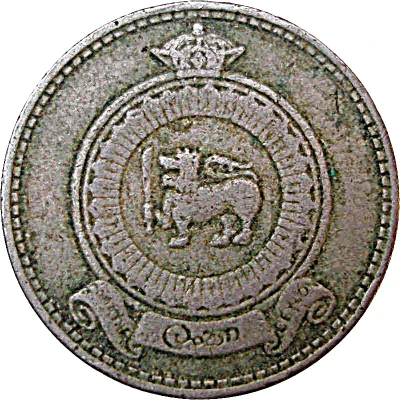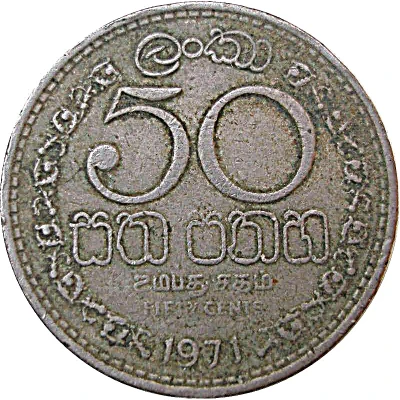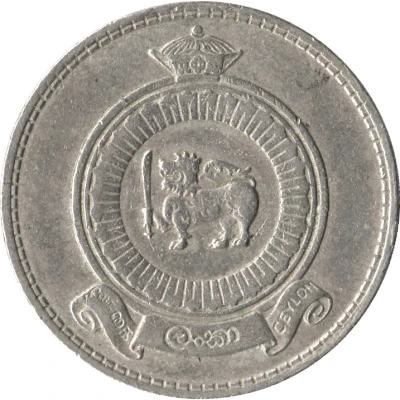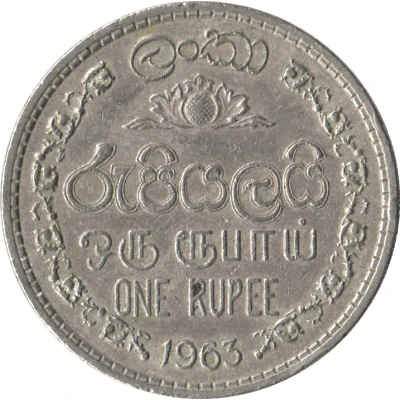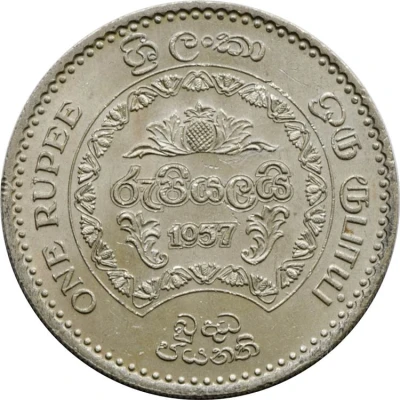
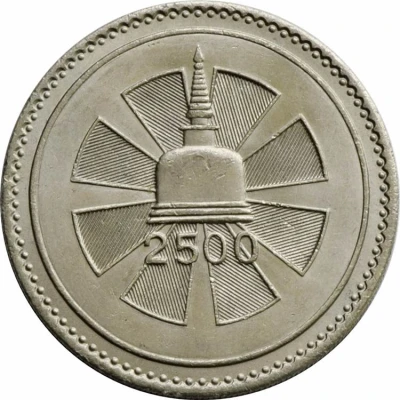

1 Rupee - Elizabeth II Buddhism
1957 year| Copper-nickel | 11.31 g | 28 mm |
| Issuer | Sri Lanka › Ceylon (1597-1972) |
|---|---|
| Queen | Elizabeth II (1952-1972) |
| Type | Circulating commemorative coin |
| Year | 1957 |
| Value | 1 Rupee |
| Currency | Rupee (1871-1972) |
| Composition | Copper-nickel |
| Weight | 11.31 g |
| Diameter | 28 mm |
| Thickness | 2.2 mm |
| Shape | Round |
| Technique | Milled |
| Orientation | Medal alignment ↑↑ |
| Demonetized | Yes |
| Updated | 2024-10-07 |
| Numista | N#11351 |
|---|---|
| Rarity index | 15% |
Reverse
The 'Buddhist motif' shown here represents a stupa. The stupa (Sanskrit for heap) is an important form of Buddhist architecture, though it predates it. It is generally considered to be a sepulchral monument - a place of burial or a receptacle for religious objects. At its simplest, a stupa is a dirt burial mound faced with stone.
Lettering: 2500
Engraver: B.R. Sindall
Edge
Reeded
Comment
“Can a mound of dirt represent the Buddha, the path to Enlightenment, a mountain and the universe all at the same time? It can if it is a stupa. The stupa (Sanskrit for heap) is an important form of Buddhist architecture, though it predates Buddhism. It is generally considered to be a sepulchral monument - a place of burial or a receptacle for religious objects. At its simplest, a stupa is a dirt burial mound faced with stone. In Buddhism, the earliest stupas contained portions of the Buddha’s ashes, and as a result, the stupa began to be associated with the body of the Buddha. Adding the Buddha’s ashes to the mound of dirt activated it with the energy of the Buddha himself.” The stupa shown is the Peace Stupa of Zalaszántó, Hungry. It was built in the early 1990s and is the largest in Europe.
Interesting fact
One interesting fact about this coin is that it features a unique blend of British and Buddhist elements. The obverse side of the coin bears the image of Queen Elizabeth II, while the reverse side features a depiction of the Buddhist symbol, the Dharma Chakra (Wheel of Dharma), which represents the teachings of Buddhism and the path to enlightenment. This blending of cultural and religious symbols reflects the diverse history and heritage of Sri Lanka, which was a British colony at the time of the coin's minting.
Price
| Date | Mintage | VG | F | VF | XF | AU | UNC |
|---|---|---|---|---|---|---|---|
| 1957 | 1800 | - | - | - | - | - | - |
Values in the table are based on evaluations by sales realized on Internet platforms. They serve as an indication only for 1 Rupee - Elizabeth II (Buddhism) 1957 coin.
